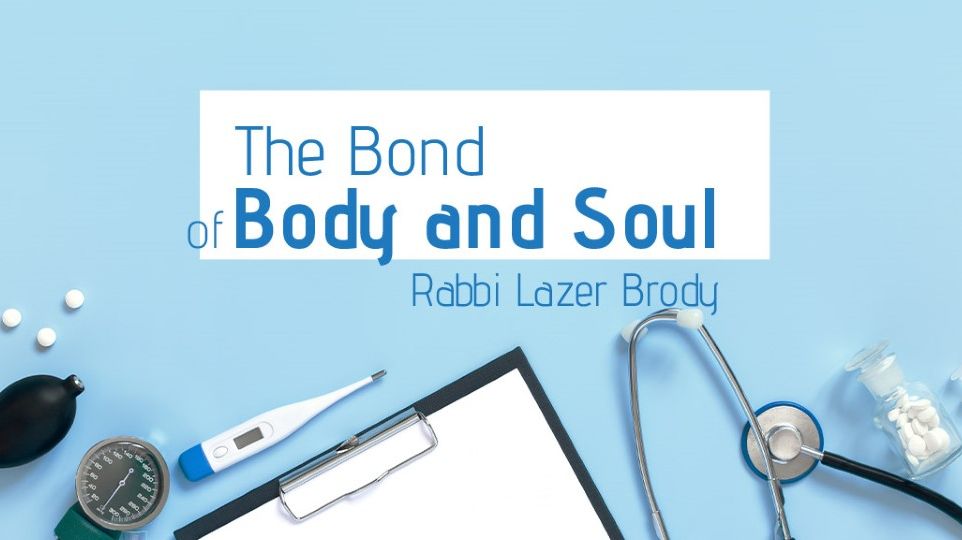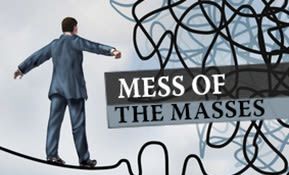
Tazria: The Bond of Body and Soul
Why does the Torah instruct an individual with an affliction to be brought before a Kohen, or priest, instead of a doctor? Does this still apply today?

“When a leprous affliction will be on a person, he shall be brought to the Kohen…”(Leviticus 13:9).
The above passage raises two questions: first, why does the Torah instruct an individual with an affliction to be brought before a Kohen, or priest, instead of a doctor? And second, why must the individual be “brought” to the Kohen; if he’s sick, shouldn’t he be going on his own accord?
During the time of the Holy Temple, Hashem’s Divine Presence was revealed, apparent to anyone. Miracles in the Holy Temple were a daily occurrence. No matter how strong Jerusalem’s winds were, the pillar of smoke ascending from the altar would go straight up. No matter how many ritual sacrifices were performed on a hot summer day, there was never a fly in the Holy Temple. When a ritual sacrifice was performed properly  and accepted on High, one could see the image of a lion in the ascending pillar of smoke; if the sacrifice was faulty, then everyone saw the image of a dog. The Divine Presence made almost no effort to conceal Itself.
and accepted on High, one could see the image of a lion in the ascending pillar of smoke; if the sacrifice was faulty, then everyone saw the image of a dog. The Divine Presence made almost no effort to conceal Itself.
Yet, a climate of such Divine revelation behooved a person to act accordingly. One cannot act in the King’s Palace like he acts in the barnyard. As such, any breach of conduct brought swift retribution.
The Gemara tells us that the severe ailments of leprous-type afflictions, tzaraat, were the result of slander, bloodshed, false oaths, sexual immorality, pride, stealing and egotism (see Arachin 16a). At the time of the Holy Temple, if a person suffered from such an affliction, no doctor and no medication would relieve or cure him unless he first uprooted the root-cause of his sickness. To do so, the sick person had to see a Kohen in the Holy Temple. The Chofetz Chaim explains in “Shmirat Halashon” that the Kohanim knew how to speak to the heart of the sick person, elicit a confession and encourage the person to repent (see Shaar Hazechira, ch. 6). The sick person would repent, undergo a seven-day purification process, bring a sin-offering to the Holy Temple on the eighth day, and he’d be cured! The Torah therefore sends the afflicted individual to the Kohen rather than to a physician.
The holy Alshech reminds us that the Kohen did not cure the person; in essence, the person cured himself by making teshuvah (repentance) and sincerely repenting for his misdeed(s). Yet, the Kohen is the one who brought the sick person to do the true self-assessment that led to the subsequent teshuvah and healing. So we ask ourselves, if the Kohen was so effective in initiating a cure, why didn’t the individual go to the Kohen on his own accord? Why did he have to be “brought” to the Kohen?
Rebbe Nachman of Breslev explains that sexual immorality and arrogance are the root causes of most of a person’s troubles in life. These are also two of the main causes of leprous afflictions, as stated in the above-mentioned Gemara in tractate Arachin. The common denominator between the sexually immoral person and the arrogant person is that they don’t want to hear advice from anyone; they want to do as they please. Arrogance is also highly related to those who slander others and speak with evil tongues. Therefore, when afflicted, they must be dragged to the Kohen, for they won’t want to go on their own accord.
Do we still have this phenomenon today?
The 613 parts of the body correspond to the 613 commandments of Torah. As the famed Kabbalist Rabbi Elazar Azikri (1533-1600) wrote in his classic book “Sefer Charedim”, an affliction in a certain part of the body indicates faulty observance or a transgression of its corresponding commandment. Although a person nowadays who speaks slander is not immediately afflicted with a leprous ailment as in the times of the Holy Temple, physical affliction is certainly a message from Above for a person to do some serious soul-searching and consequent teshuvah. And, if he can’t identify on his own why he is suffering, he should see a true tzaddik – a pious and righteous individual who can help him rectify. Rebbe Natan of Breslev writes repeatedly in Likutei Halachot that in these times, the tzaddik and righteous spiritual guide is just like the Kohen of the Holy Temple.
The body and the soul are one; therefore, any medical treatment can only be effective if a person treats the blemish to his soul that corresponds to the affliction to his body.
A connection to a true tzaddik is so very important for an individual’s spiritual health. Therefore, even in contemporary times, when a person doesn’t willfully establish a connection with a tzaddik, Hashem gives him a “reason” to seek the tzaddik’s blessing and guidance. Don’t wait until you’re sick; see the tzaddik while you’re healthy, and Hashem should help you stay healthy always, amen!












Tell us what you think!
Thank you for your comment!
It will be published after approval by the Editor.